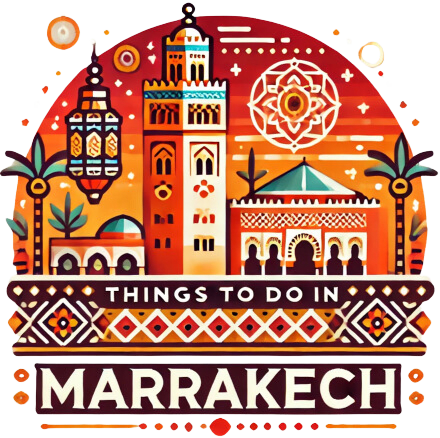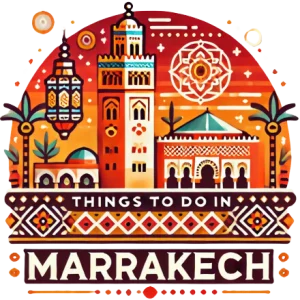Marrakech is more than just a destination—it’s a sensory overload in the best possible way. As soon as you step foot in the city, you’re greeted by the hum of scooters, the scent of saffron and grilled meat, and an explosion of color from every direction. But with so much going on, narrowing down the marrakech points of interest worth your time can feel like a puzzle.
That’s where this guide comes in. Whether you’re visiting for a weekend or spending a week in the city, here’s your no-fluff list of must-see attractions. These are the points of interest in Marrakech that travelers talk about long after they’ve returned home.
Table of Contents
Jemaa el-Fnaa Square
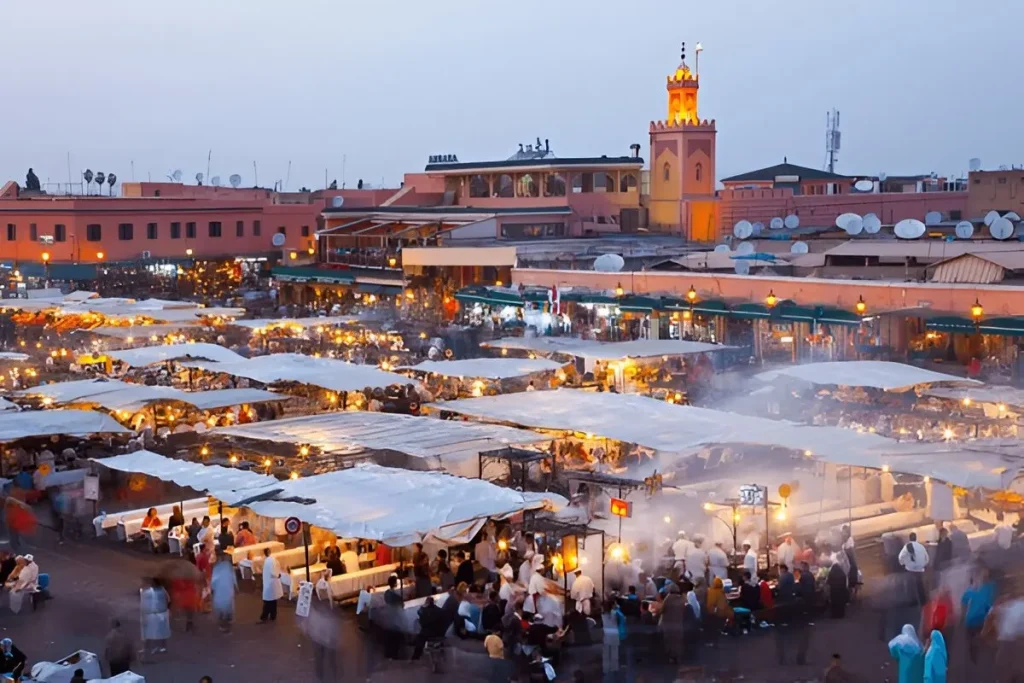
This chaotic square is the heart of the Medina. Think street performers, orange juice stalls, and the constant sound of drums. It’s crowded, sometimes overwhelming, and absolutely unforgettable. By day, it’s a market. By night, it’s a stage.
If you’re wondering where to begin your exploration, Jemaa el-Fnaa is your launch pad. Grab a mint tea from one of the rooftop cafés and just observe—it’s like watching a live theater performance.
Koutoubia Mosque
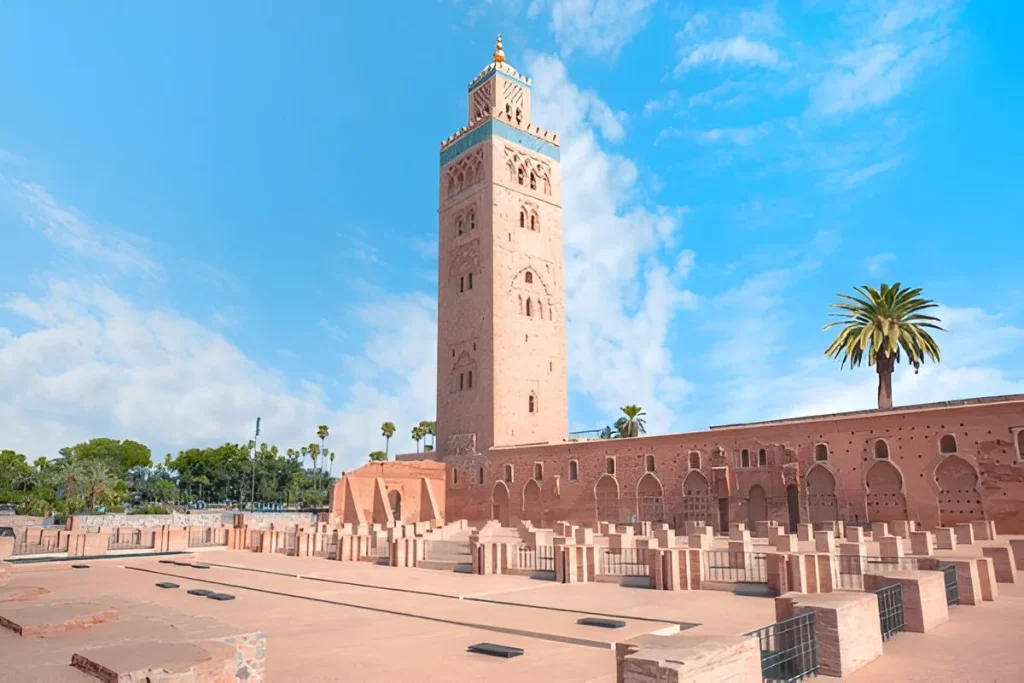
Visible from nearly every corner of the old city, the Koutoubia Mosque stands tall as one of the most iconic landmarks in Marrakech. Its 77-meter-high minaret isn’t just a symbol of the city—it’s a reliable reference point when navigating the bustling medina streets. Although entry is restricted to Muslims, the beauty of the mosque can still be fully appreciated from the outside. Its sandstone walls, elegant arches, and harmonious proportions have inspired architectural masterpieces across the Islamic world, including the famous Giralda Tower in Seville. As one of the oldest and most photographed points of interest in Marrakech, the Koutoubia Mosque is a must-see for any visitor who wants to connect with the city’s rich spiritual and historical identity.
Bahia Palace
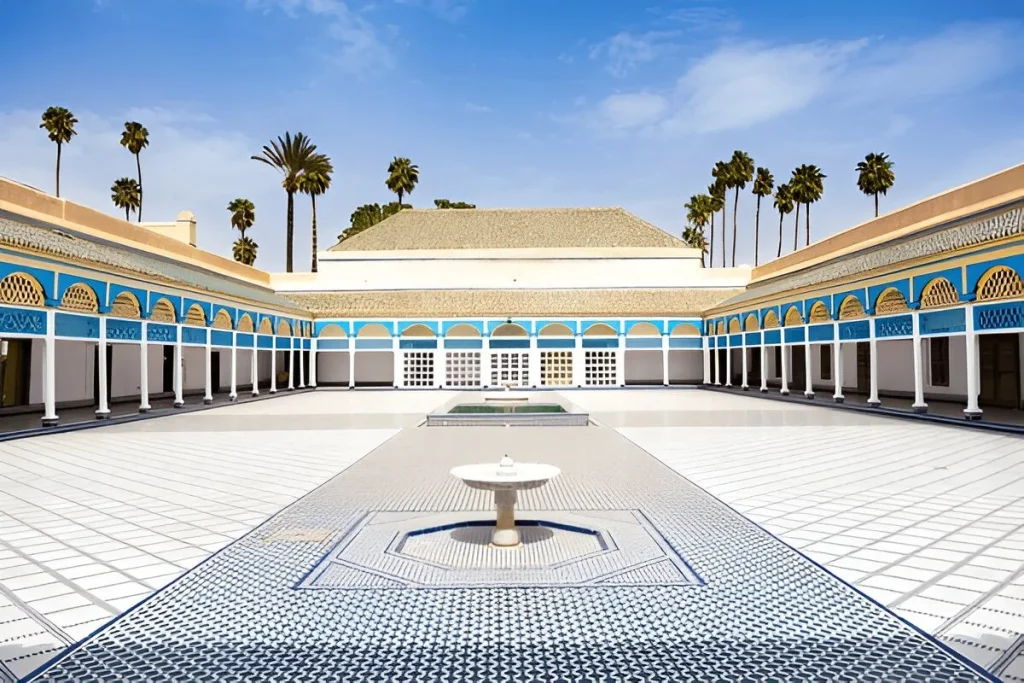
The name “Bahia” translates to “brilliance,” and this 19th-century palace truly lives up to it. Nestled in the southern part of the medina, Bahia Palace is one of the most dazzling points of interest in Marrakech, offering a peaceful escape from the city’s constant motion. Built by Grand Vizier Si Moussa and expanded by his son, the palace was designed to be the grandest of its time—and it shows in every detail.
Inside, you’ll find intricate cedarwood ceilings, painted doorways, colorful zellige tilework, and wide courtyards dotted with fountains and orange trees. The craftsmanship reflects a golden era of Moroccan-Andalusian design. It’s the kind of place where you walk slowly, pausing to admire each mosaic and shadow pattern.
Wandering through Bahia Palace feels like stepping into a storybook. With sunlight streaming into the riad-style courtyards and the sound of birds echoing through marble halls, it’s easy to imagine what life was like for the royal family and their entourage. It’s no surprise that this architectural gem ranks high among the most visited Marrakech points of interest.
Saadian Tombs
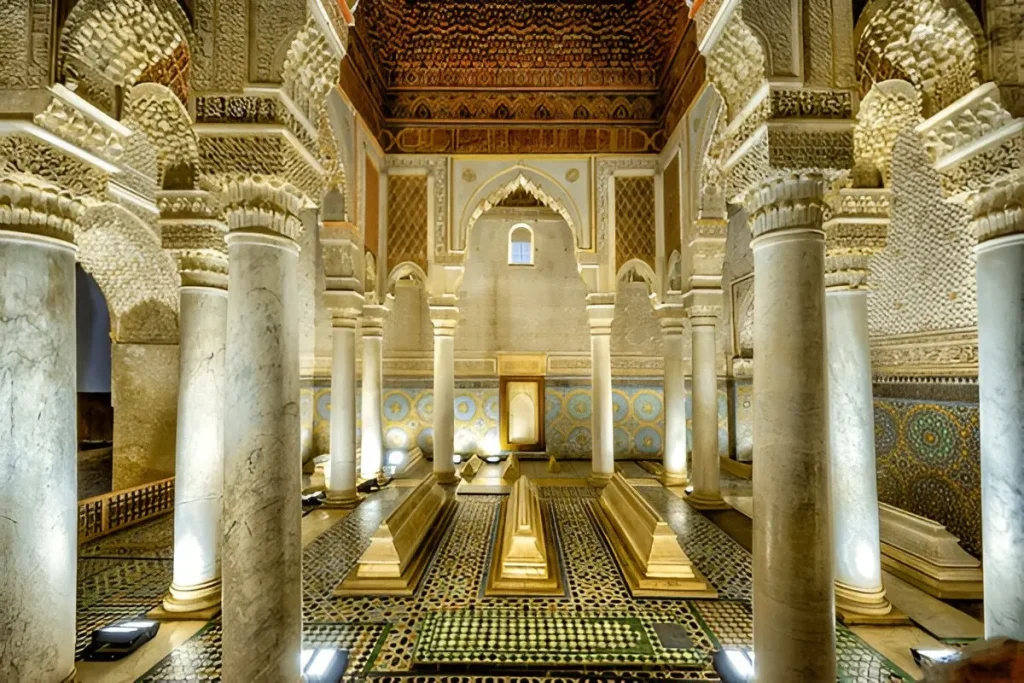
Hidden from the world for centuries and only rediscovered in 1917 by aerial photography, the Saadian Tombs are a striking reminder of Morocco’s imperial past. Dating back to the late 16th century, these tombs were sealed off by a later sultan and remained untouched until their accidental uncovering. Today, they stand proudly as one of the most important historical points of interest in Marrakech, drawing visitors from all over the world.
The site houses the mausoleum of Sultan Ahmed al-Mansour, one of the most powerful rulers of the Saadian dynasty, along with around sixty members of his family and court. Walking through the grounds, you’ll see elaborate marble columns, finely carved cedarwood ceilings, and colorful mosaics that still shine under the soft natural light. The attention to detail in the Chamber of the Twelve Columns is a masterclass in Islamic art and design.
Despite its compact size, the Saadian Tombs leave a deep impression. Their quiet beauty and rich history make them an essential stop for anyone interested in architecture, heritage, or simply exploring lesser-known corners of the top Marrakech points of interest.
Majorelle Garden & Yves Saint Laurent Museum
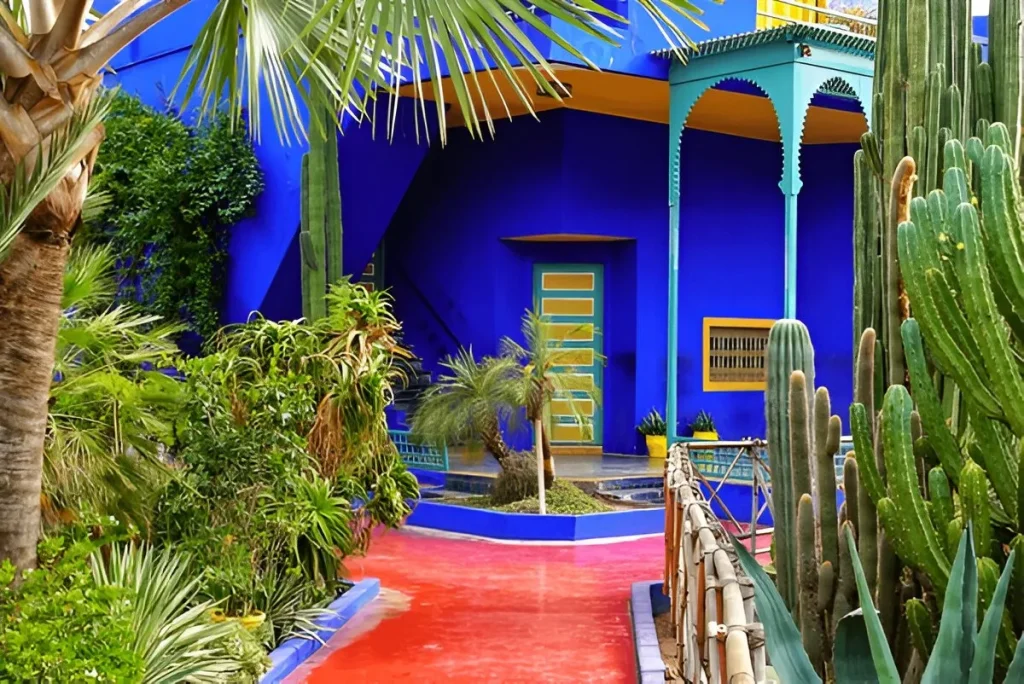
If you’re craving a moment of calm away from the energy of the medina, Majorelle Garden offers the perfect retreat. Originally designed in the 1920s by French painter Jacques Majorelle, this lush garden is one of the most peaceful and visually striking points of interest in Marrakech. With cobalt blue walls, trickling fountains, and exotic plants from five continents, it’s a feast for the eyes and a breather for the soul.
The garden is a favorite among photographers and travelers alike—not just for its beauty, but for the sense of serenity it offers in a city that never slows down. Every corner is carefully curated, from towering bamboo to vibrant bougainvillea, making it one of the most photogenic spots in Marrakech.
Just next door is the Yves Saint Laurent Museum, built to honor the legacy of the iconic French designer who once called the garden his personal sanctuary. The museum houses a curated collection of his most famous designs, as well as sketches, photographs, and pieces that show how Morocco influenced his work.
Together, these two sites form a powerful cultural duo and remain essential stops among the most admired Marrakech points of interest.
Ben Youssef Madrasa
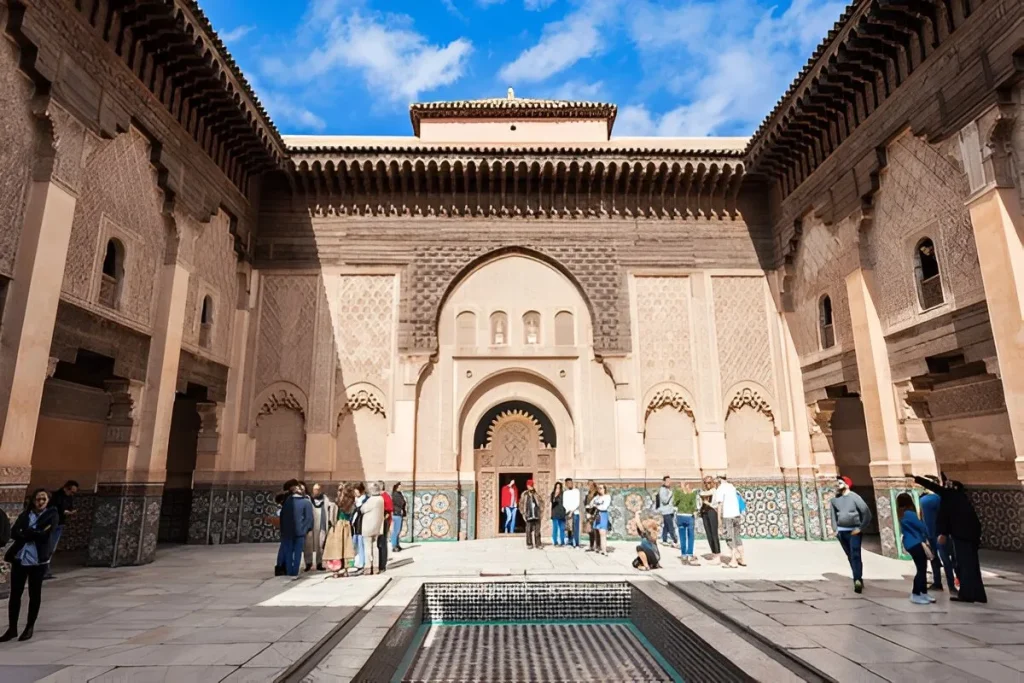
Once the largest Islamic college in North Africa, the Ben Youssef Madrasa stands today as a true masterpiece of traditional Moroccan design. Founded in the 14th century and rebuilt by the Saadians in the 16th, this madrasa served as a place where hundreds of students lived and studied the Qur’an for centuries. Though it no longer functions as a school, its architecture continues to inspire admiration from visitors around the world.
Intricate mosaics, carved cedarwood, and Kufic inscriptions fill every corner of the building. The symmetrical courtyard, centered around a marble basin, reflects the precision and harmony that define Islamic art. As you wander through the narrow dormitory halls and peer into modest student chambers, it’s easy to imagine the rhythm of scholarly life within these walls.
Despite being in the heart of the old city, the madrasa feels worlds away from the chaos of the nearby souks. The calm that fills the space is unexpected and deeply moving. Without a doubt, Ben Youssef Madrasa deserves its place among the most significant points of interest in Marrakech, especially for those drawn to history, craftsmanship, and quiet reflection.
Marrakech Museum
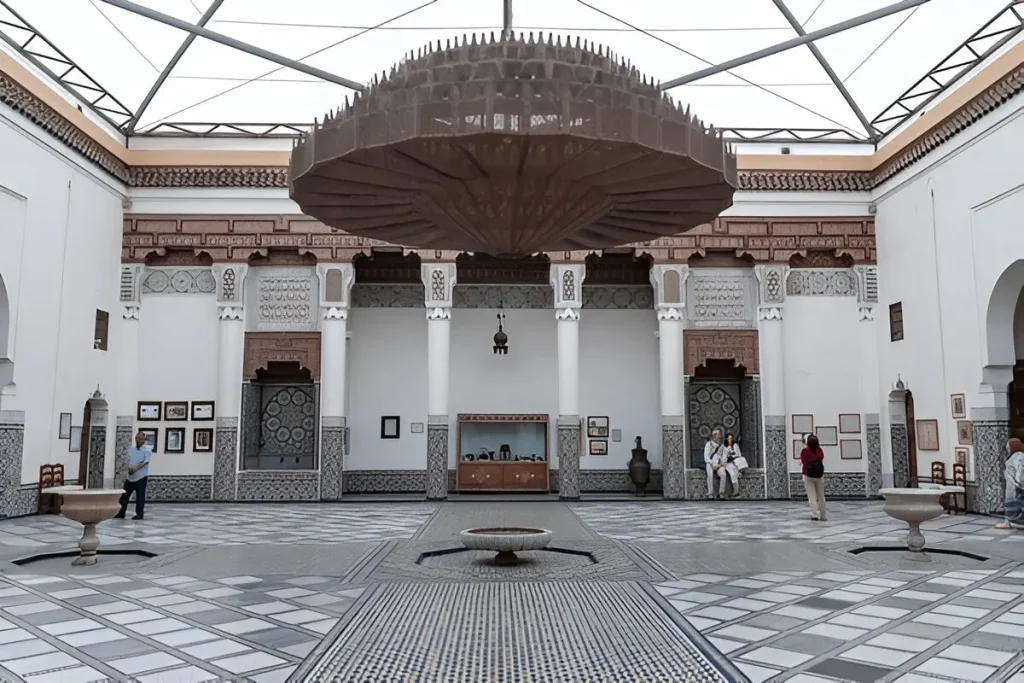
Set within the walls of a beautifully restored palace, the Marrakech Museum is as much about its architecture as it is about the art inside. Located near the Ben Youssef Madrasa, this museum offers a mix of contemporary pieces and traditional Moroccan artifacts—from ceramics and calligraphy to jewelry and textiles. But for many visitors, the real showstopper is the building itself.
At the center is a stunning tiled courtyard crowned by an enormous brass chandelier suspended from a dome above. The intricate plasterwork, zellige patterns, and hand-carved wooden doors make every step through the museum a visual experience. It’s a quiet space, filled with natural light and echoes of the palace’s former grandeur.
The museum isn’t overly large, which makes it perfect for a relaxed visit. And because it’s less crowded than other major sites, it gives you time to appreciate the art and design in peace. For anyone interested in Moroccan heritage or looking to explore beyond the usual tourist path, the Marrakech Museum is one of the more underrated yet rewarding points of interest in Marrakech.
El Badi Palace
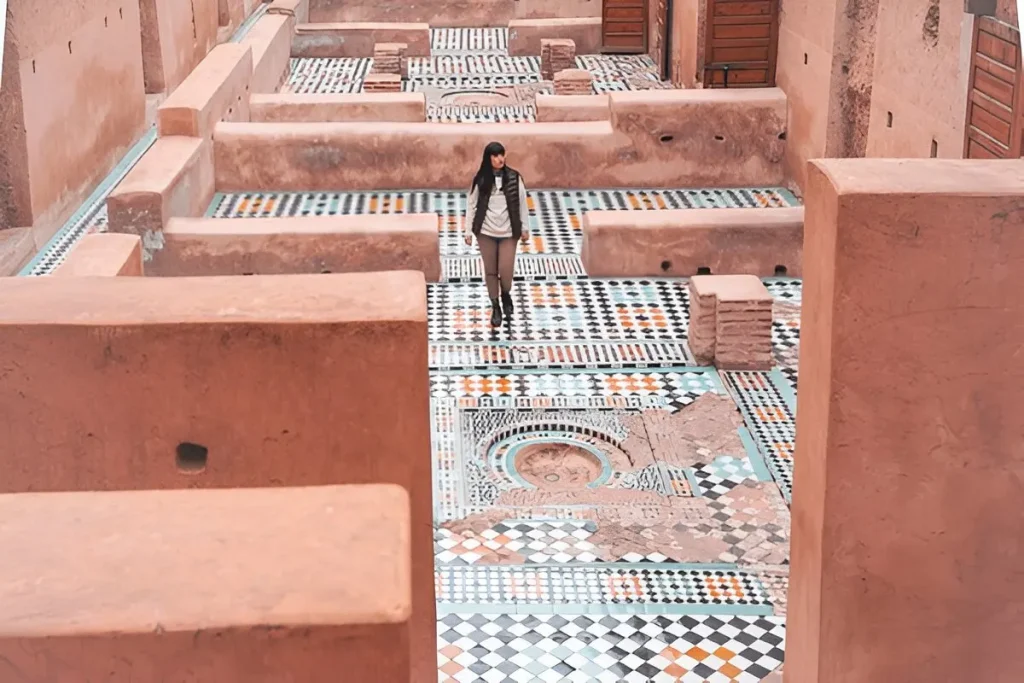
Don’t expect polished marble or glittering treasures—El Badi Palace is not about opulence, but about what remains of it. Built in the late 16th century by Sultan Ahmed al-Mansour to celebrate a military victory over the Portuguese, the name “El Badi” means “the Incomparable.” And while time has stripped it of its former riches, its grandeur still echoes in every corner of the ruins.
At its peak, the palace had over 300 rooms decorated with gold, Italian marble, and onyx from Mali. Foreign ambassadors once walked these halls, surrounded by fountains, lush gardens, and towering walls. Today, those same walls are crumbling—but they stand tall, attracting not only curious visitors but also a colony of storks that nest on the ramparts.
Wandering through the open courtyards and underground chambers gives you a sense of just how massive and important this place once was. The stark contrast between past luxury and present silence makes El Badi a powerful site to explore. It’s one of the more dramatic and atmospheric points of interest in Marrakech, especially for history lovers and photographers seeking unique backdrops.
Le Jardin Secret
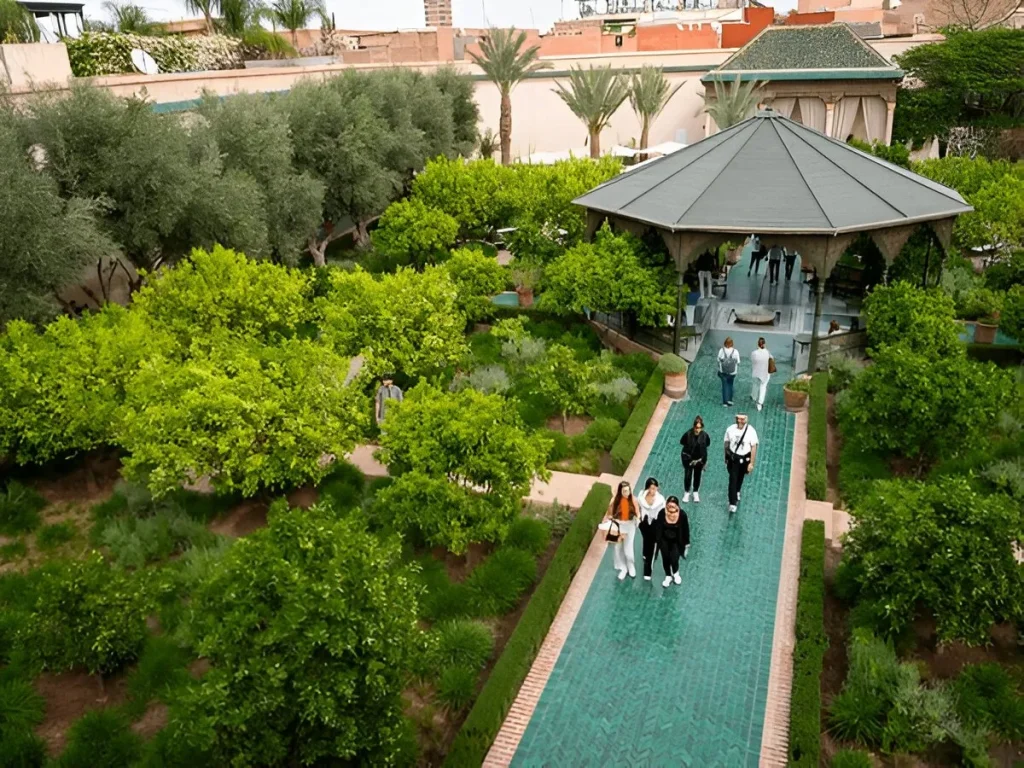
Tucked behind an ordinary doorway in the medina, Le Jardin Secret offers a peaceful escape that lives up to its name. Originally built more than 400 years ago and meticulously restored in 2016, this historic garden is a hidden gem among the many points of interest in Marrakech. Once a residence of sultans and qadis, it now welcomes visitors seeking calm, shade, and a connection to Moroccan history.
The site is split into two distinct garden spaces: one designed in traditional Islamic style, with symmetrical pathways and water channels symbolizing paradise, and another featuring a more exotic botanical collection. Both are framed by elegant pavilions and restored towers that blend Islamic and Saadian architectural elements.
Unlike the often-crowded Majorelle Garden, Le Jardin Secret remains quiet and less commercial. There’s a rooftop café tucked inside, where you can sip coffee or mint tea while enjoying panoramic views of the gardens below and the minaret above. Whether you’re looking to recharge or simply explore something off the tourist trail, this oasis ranks among the most soothing and underrated Marrakech points of interest.
Dar Si Said Museum
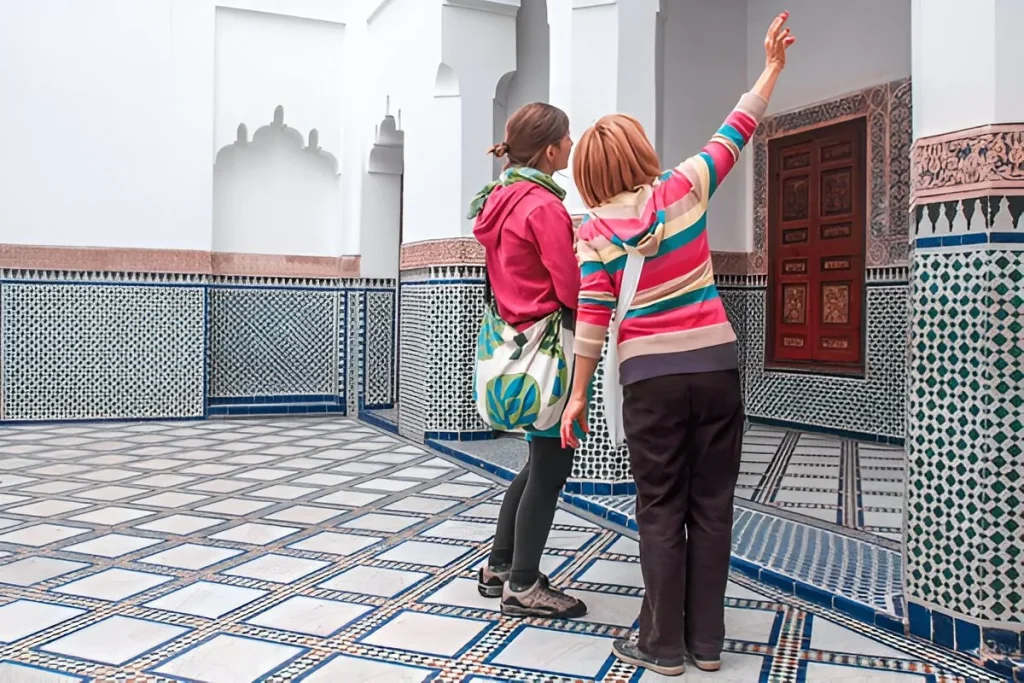
Often overlooked by the typical tourist route, the Dar Si Said Museum is one of those places that quietly surprises you. While it doesn’t attract the same crowds as other major landmarks, it offers one of the richest cultural experiences among the many points of interest in Marrakech.
The museum is housed in a former 19th-century palace built by Si Said, the brother of Vizier Bou Ahmed, who also commissioned the Bahia Palace. Inside, you’ll find a wide-ranging collection that includes finely carved Moroccan woodwork, traditional Berber jewelry, antique weapons, carpets, and beautifully crafted doors and furniture from across Morocco. Every room tells a story—not just through the objects on display, but through the architecture itself.
Arched ceilings, painted cedar panels, and tranquil inner courtyards create an atmosphere that feels more like a palace than a museum. It’s quiet, elegant, and a perfect place to slow down and soak up the richness of Moroccan heritage. If you’re interested in traditional craftsmanship and want to dive deeper into Morocco’s artisanal roots, Dar Si Said is one of the most rewarding yet underrated Marrakech points of interest.
Menara Gardens
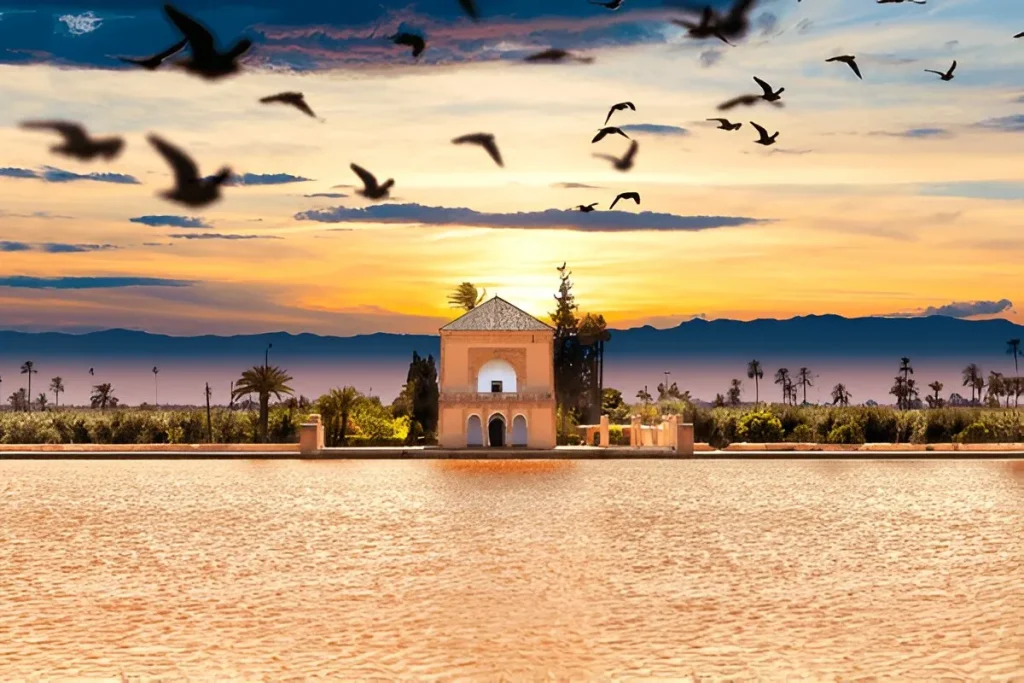
Dating back to the 12th century, the Menara Gardens are among the oldest and most tranquil points of interest in Marrakech. Located just a short distance from the bustling medina, they offer a welcome change of pace and a chance to see a different side of the city—one that’s calm, spacious, and rooted in history.
At the heart of the gardens lies a massive rectangular reflecting pool, originally designed to irrigate the surrounding olive groves. The still water mirrors the open sky and the elegant green-roofed pavilion that stands beside it. On a clear day, the backdrop of snow-capped Atlas Mountains adds a breathtaking contrast to the desert tones of Marrakech.
Locals often come here for afternoon walks or family outings, and it’s easy to see why. There’s something grounding about the wide open space, the quiet rustling of olive trees, and the steady presence of a site that has witnessed centuries of Moroccan history. Whether you’re looking to relax or capture stunning photographs, the Menara Gardens are a timeless stop on any list of essential Marrakech points of interest.
Palmeraie of Marrakech
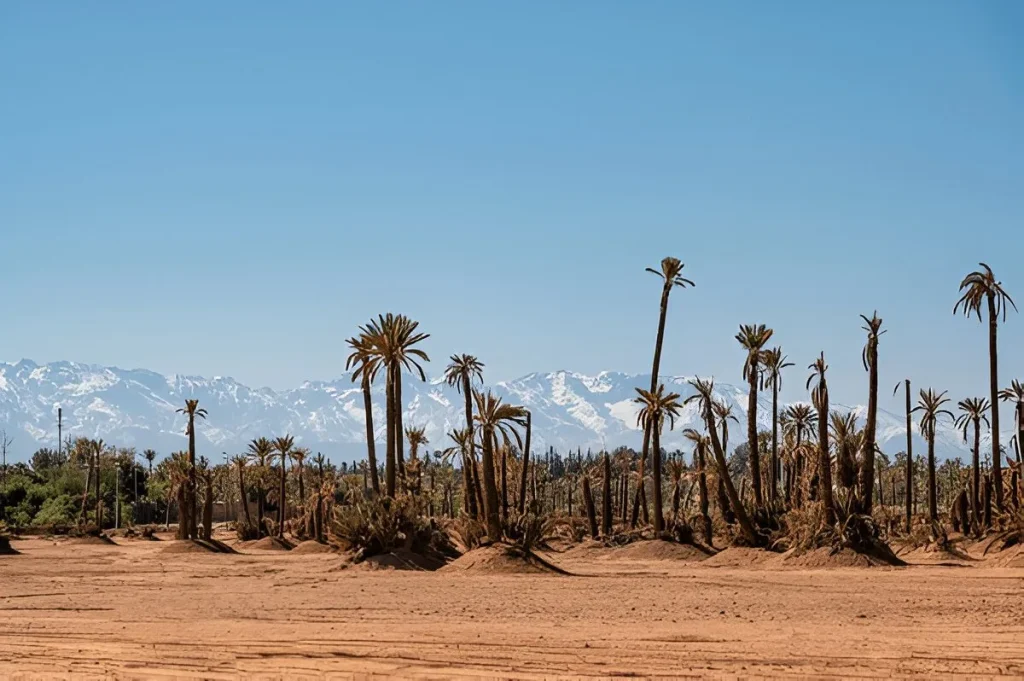
Just a short drive from the hustle of the medina, the Palmeraie of Marrakech opens up into a wide expanse of palm groves that feels like another world entirely. Home to over 100,000 palm trees spread across more than 13,000 hectares, this historic oasis dates back to the Almoravid dynasty and has long been associated with the city’s agricultural and cultural identity.
Today, the Palmeraie is one of the most popular points of interest in Marrakech for outdoor activities and short getaways from the urban core. It’s especially known for camel rides that let you experience the desert vibe without venturing too far, and quad biking tours that offer an adrenaline-fueled way to explore the vast landscape. Whether you’re traveling solo, as a couple, or with family, it’s a flexible half-day trip that appeals to all kinds of travelers.
The best time to visit is in the early morning or late afternoon when the light softens and the temperature is more comfortable. Many tours also include tea in a Berber tent, giving you a taste of local hospitality in a unique setting. If you’re after a blend of adventure and scenery, the Palmeraie is a must-add to your list of Marrakech points of interest.
Local Souks
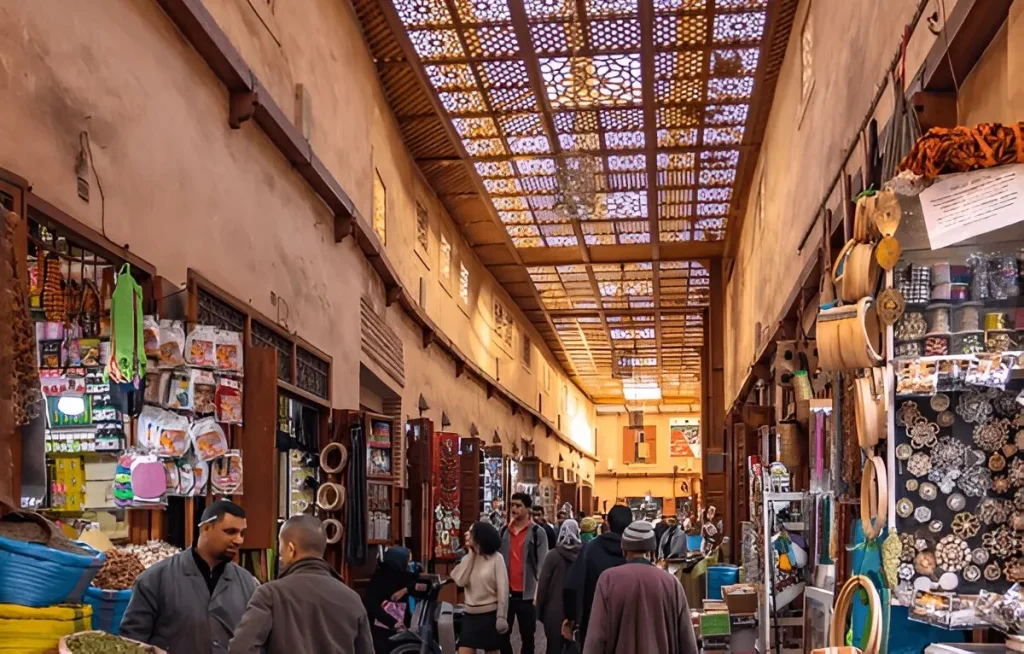
You can’t make a list of Marrakech points of interest without giving the souks the spotlight they deserve. More than just a market, the souks of Marrakech are a living, breathing organism that stretch endlessly through the medina. This isn’t one single space—it’s a sprawling maze of narrow alleyways, each with its own specialty, personality, and rhythm.
From leather bags that are stitched right in front of you to hand-punched lanterns, vibrantly dyed carpets, brass teapots, and pyramids of saffron and cumin, the selection is overwhelming—in the best way possible. You’ll hear haggling in multiple languages, the rhythmic hammering of metalworkers, and the occasional motorbike squeezing through the foot traffic.
Every turn holds a surprise. One moment you’re walking through a tunnel of hanging rugs, and the next you’re face-to-face with a stall stacked with fragrant soaps and argan oil. Even if you’re not shopping, the souks are an experience. They offer a crash course in Moroccan culture, craftsmanship, and daily life.
For travelers who want to dive straight into the heart of the city’s energy, the souks are one of the most essential and unforgettable points of interest in Marrakech.
Mellah: The Jewish Quarter
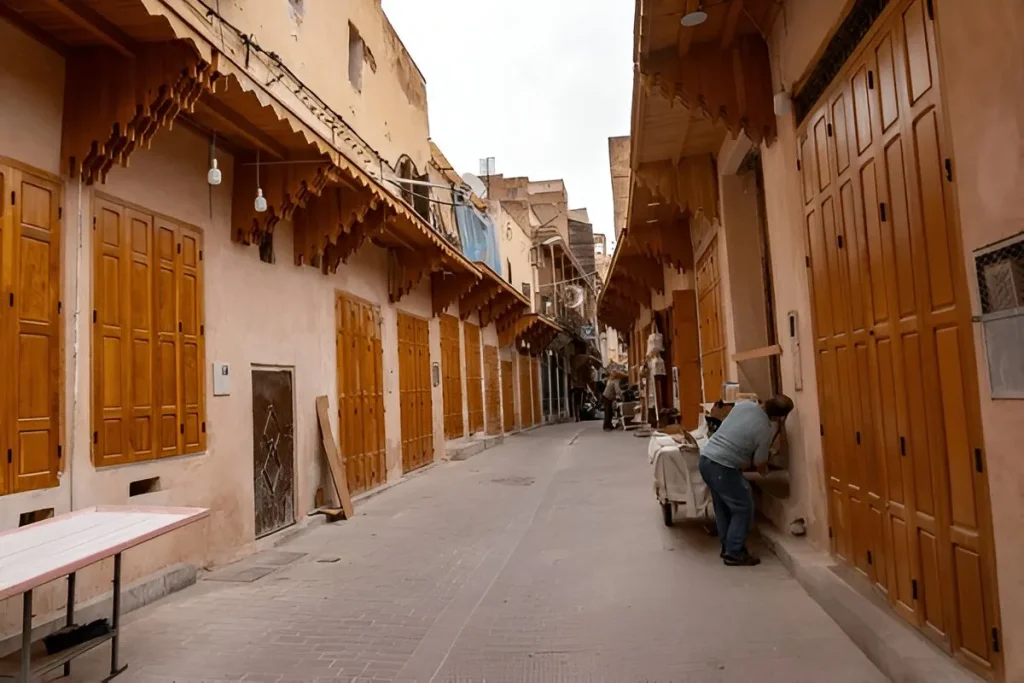
Just a few minutes on foot from the Bahia Palace, the Mellah—Marrakech’s historic Jewish quarter—remains one of the city’s most culturally rich yet often overlooked points of interest in Marrakech. Established in the 16th century under Sultan Moulay Abdallah, the Mellah was once a thriving center of Jewish life, with its own markets, schools, synagogues, and community institutions.
Today, it retains a quieter, more residential vibe compared to the busier sections of the medina. Walking through its narrow streets, you’ll notice architectural differences—shuttered balconies, distinct doorways, and a layout that feels more organized than the rest of the old city. Highlights include the Slat Al Azama Synagogue, still in use and open to visitors, and the nearby Jewish cemetery, which stands as one of the oldest in Morocco.
While the Mellah may not be as visually dramatic as some other areas, it offers depth and perspective. Exploring it gives you insight into the multicultural fabric of Marrakech and the city’s long-standing tradition of coexistence. If you’re looking to go beyond the surface, the Mellah is a meaningful addition to your itinerary of Marrakech points of interest.
Tiskiwin Museum
Tucked away near the Dar Si Said Museum, the Tiskiwin Museum is one of the most fascinating yet under-the-radar points of interest in Marrakech. Founded by Dutch anthropologist Bert Flint, the museum is dedicated to preserving the cultural heritage of the Saharan trade routes that once connected Morocco with sub-Saharan Africa.
Inside, the rooms are arranged in a way that mimics a journey across the caravan routes—from Marrakech through the Atlas Mountains and deep into the Sahel. You’ll find beautifully displayed artifacts including Berber textiles, traditional jewelry, wood carvings, tribal masks, pottery, and musical instruments collected from Morocco, Mali, Mauritania, and Niger. Each room offers a glimpse into the daily life, customs, and craftsmanship of different ethnic groups that contributed to centuries of trans-Saharan exchange.
The building itself, a traditional riad with tiled floors and carved wooden balconies, adds to the immersive experience. It’s a peaceful, educational stop—perfect for travelers who enjoy learning about history and anthropology. If you want to understand Morocco’s deep-rooted connections to the African continent, the Tiskiwin Museum deserves a spot on your list of Marrakech points of interest.
Bonus: Off-the-Beaten-Path Ideas
- Photography walk: Join a local guide and capture Marrakech’s street life beyond the big landmarks.
- Cooking class: Learn to make tagine or pastilla in a traditional riad kitchen.
- Tannery visit: Raw, smelly, and real. Marrakech’s tanneries aren’t for the faint-hearted.
- Rooftop dining: Skip the restaurants at ground level. Many riads and cafés have incredible rooftop terraces.
Travel Tips and Safety
Marrakech can feel overwhelming at first. Here’s how to make it easier:
- Dress modestly—it’s a conservative country.
- Carry cash, especially small bills.
- Agree on prices beforehand, whether it’s for taxis, guides, or henna.
- Watch for scams. If someone says a street is closed, it usually isn’t.
- Stay aware, especially in crowded places like Jemaa el-Fnaa.
Worried about safety? Here’s a detailed post that breaks it down:
👉 Is Morocco Safe to Visit?
Final Thoughts
Marrakech is loud, beautiful, messy, and unforgettable. It’s a city that asks for your attention and rewards you every step of the way. The points of interest in Marrakech aren’t just tourist attractions—they’re pieces of a living, breathing culture.
Whether you’re drawn to history, gardens, design, or food, this city delivers. Just remember to take breaks, drink water, and give yourself time to wander. That’s where the magic happens.
